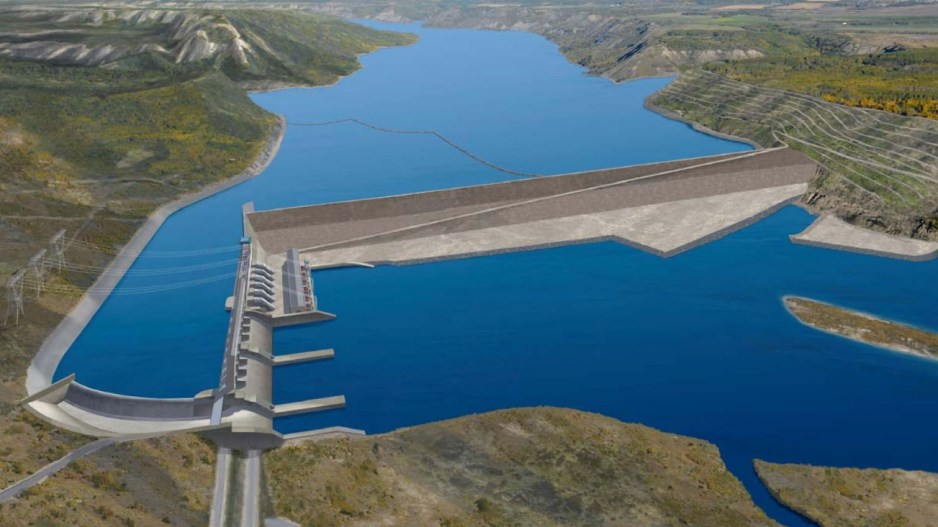By the time the Site C hydroelectric dam is paid off, fusion or some other energy advancement might already have made it obsolete.
According to evidence given to the BC Utilities Commission (BCUC), BC Hydro conceded that it planned to have the $9 billion hydroelectric dam project paid off 70 years after it’s finished in 2024.
That revelation was buried in hours of otherwise technical testimony on August 17 during BCUC hearings into BC Hydro’s 2015 rate design application.
It was only recently that the NDP’s BC Hydro critic, Adrian Dix, picked up on it and wrote about it in The Tyee.
David Austin, a lawyer who specializes in energy issues for Clark Wilson LLP, had elicited the admission from BC Hydro executives during cross-examination.
A 70-year paydown period would mean the dam would not have to be paid for until 2094, if BC Hydro stuck with that plan. That is assuming that BC Hydro’s load forecasts turn out to be correct and the $9 billion project comes in on budget. (The Muskrat Falls hydroelectric dam in Labrador is now estimated to be $4 billion over its 2012 estimated cost.)
Austin asked Hydro executives whether, based on a price of $64 per megawatt hour and 100% debt financing, the utility is not expecting a return on investment for 70 years. A BC Hydro executive confirmed that is the case.
As Austin points out, when the federal government provided a loan guarantee for the Newfoundland government, which is borrowing $5 billion for the Muskrat Falls project, it was capped at 40 years.
“For the purposes of the government to go ahead with Site C, it used a completely unorthodox financial analysis,” Austin said. “You just don’t do that in this day and age.”
Dix told Business in Vancouver that the revelations now coming out of BCUC hearings on BC Hydro’s rate design application are the kind that would likely have come out before Site C dam was approved, had the government not excluded it from being subject to project-specific BCUC scrutiny.
He said the 70-year paydown period is just one of the ways the government has tried to make Site C look more economically viable than it is.
“The contortions to which they’ve gone through not-project-ready but press-release-ready is embarrassing,” Dix said.
But BC Hydro says the 40-year amortization periods typically used for independent power producers (IPPs) are based on negotiations with developers, whereas the 70-year period used for Site C dam was simply a way of calculating unit energy costs.
BC Hydro spokeswoman Mora Scott said the actual period over which costs will be recovered will be determined by the BCUC. And ultimately, she said, the dam will be cheaper to operate over the long term.
“While there is a significant upfront cost, [dams] have a long lifespan and are inexpensive to operate,” she said in an email to BIV.
But according to Austin, by drawing out the paydown period, BC Hydro was able to make the cost of building the dam seem more attractive than projects financed by the private sector – wind and run-of-river projects, for example.
Whereas BC Hydro used 40-year financing periods for independent power projects, it used 70 years for Site C. At a cost to ratepayers of $58 to $61 per megawatt hour, Site C dam does indeed look cheaper than independent power, which BC Hydro put at $85 per megawatt hour.
“The longer the payback period that goes into your modelling, you can spread your cost of money over a longer period of time, so it makes it cheaper, for sure,” said Paul Kariya, executive director for Clean Energy BC.
Kariya said run-of-river projects have roughly the same lifespan as larger hydroelectric dams. Clean Energy BC had therefore argued that, based on an “apples-to-apples” comparison, IPP power projects should have been considered cost-competitive with or slightly less expensive than Site C.
“I think [Austin’s] arguments were that, in essence, the government didn’t take any return on equity, and that’s significant because no private-sector company can operate without taking anything back,” Kariya said.
“I guess the question to be asked was, ‘Shouldn’t Site C be paying back something to the ratepayer who’s putting up the money and, ultimately, the taxpayer?’”
Austin thinks it should.
“The government is the owner of BC Hydro,” he said. “It should be expecting a return on its investment in case Site C goes sideways, because if it goes sideways, it’s going to be the one, as a shareholder, that suffers.”•



